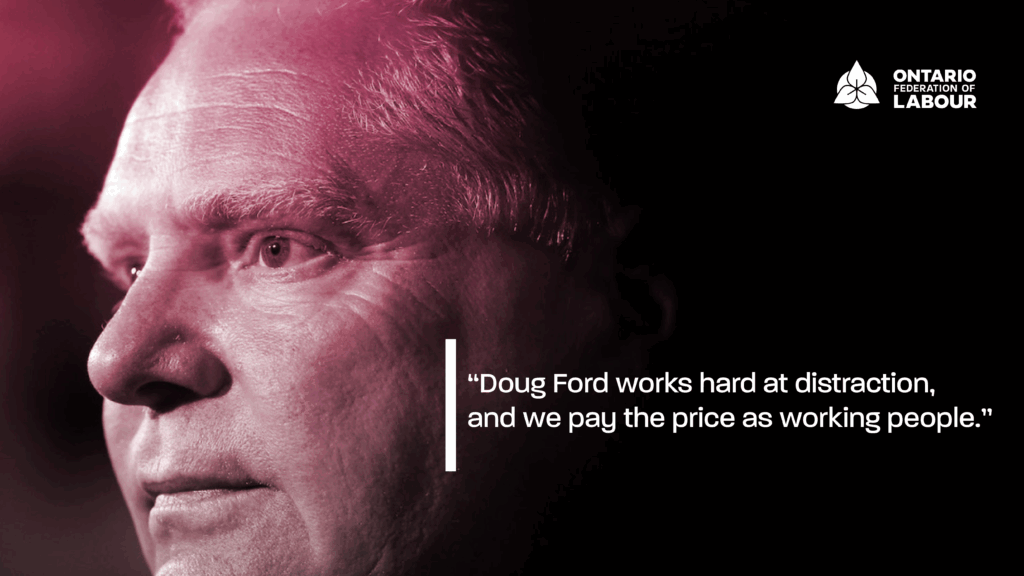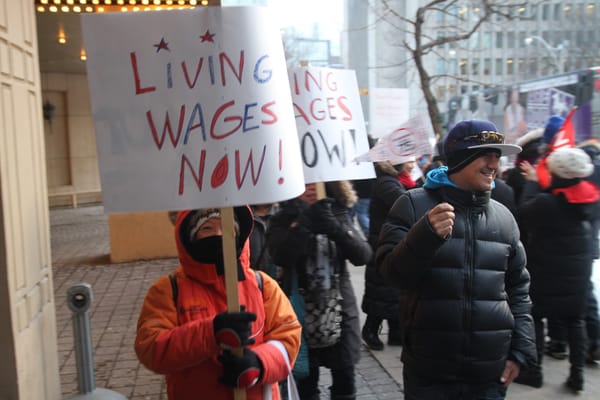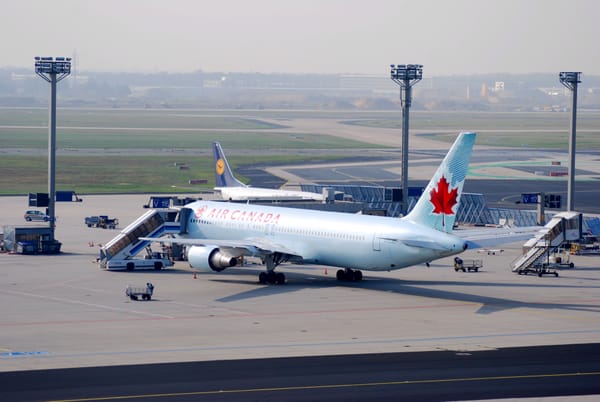Before we get into this week’s newsletter, I wanted to provide an update of sorts on a topic discussed in Class Struggle a few weeks back. In January, I wrote about the fight to maintain remote work options and the consequent employer pushback. The impetus for that newsletter was the Treasury Board’s decision to begin unilaterally forcing federal public servants back to the office, a policy which the Public Service Alliance of Canada (PSAC) — one of the unions representing federal workers — opposed by filing a complaint with the Federal Public Sector Labour Relations and Employment Board.
As Vanmala Subramaniam reported in The Globe and Mail, the Board has now issued its report, which addresses stalled wage negotiations as well as the remote work dispute. According to the Board, the government should allow federal public sector workers to voluntarily request remote work. But, it emphasizes, decisions about the location of work remain at the discretion of the employer.
As I assumed would happen, this report effectively confirms the well-established principle that the boss has the right to make decisions about where work takes place. A voluntary request procedure would be a minor reform, but it falls far short of winning a right to remote work. If PSAC and other unions hope to achieve such a right, they’ll likely have to do it by organizing union members to exert enough pressure on the employer to include this language in a future collective agreement. With bargaining slowly careening toward an indefinite impasse and a potential strike of federal public servants on the horizon, unions might find this the best course of action.
For strategic and rhetorical inspiration, the federal public sector unions might look to their counterparts south of the border. In response to efforts from House Republicans to push U.S. federal government employees back to their D.C. offices, the American Federation of Government Employees (AFGE) union has launched a campaign tying remote work to the Biden Administration’s climate plans. In 2021, U.S. President Joe Biden signed an executive order calling on the federal government to achieve carbon neutrality by 2050, and as AFGE points out, reducing the commutes of federal public workers would count toward this goal.
Here in Canada, the Trudeau Liberals’ climate objectives, tepid as they are, could perhaps offer unions a similar strategic opening, if only to build broad support for the idea that unions securing a right to remote work complements the fight against climate change. Messaging is no substitute for organizing, but tying remote work to climate could help deepen public support for federal workers’ demands. Canadian unions would be wise to keep their eyes on this U.S. campaign.
Speaking of American labour, this week the School of Industrial and Labor Relations (ILR) at Cornell University released its annual “Labor Action Tracker” report, which compiles all American work stoppages in 2022. This annual resource has become invaluable in gauging the strength and mobilizing capacity of American unions. Moreover, because both union and non-union workers have a protected right to strike in the U.S., keeping track of work stoppages data with this level of detail provides a window into “hot shops” or industries where unions might aid and organize new members.
In total, the Labor Action Tracker recorded 424 work stoppages in 2022 (417 strikes and seven lockouts), involving roughly 224,000 workers. This represents a 52 per cent increase in work stoppages from 2021. Moreover, at more than 4.45 million strike days (number of workers multiplied by number of days on strike), time lost to work stoppages is up by 36 per cent from last year.
This is relatively good news, coming as it does after recently released data from the Bureau of Labor Statistics (BLS) showed a further fall in American union density in 2022. According to January’s BLS report, union density continued its long-term decline, going from 10.3 per cent in 2021 to 10.1 per cent last year. Despite unions growing their total membership by 1.9 per cent, the labour market simply added more workers than American labour could organize. Release of the BLS’ annual report on union membership has become somewhat of a date of ritual mourning on the left. Modestly uplifting strike figures are therefore a welcome salve.
The increase in American work stoppages is driven largely by workers in the accommodation and food services industry, who account for 144 of the 424 stoppages. Unsurprisingly, Starbucks Workers United is responsible for the vast majority of these strikes and walkouts. Yet, because their workplaces tend to be very small, and strikes at them tend to be short, food service workers only account for 3 per cent of total strike days. As is the case when it comes to organizing and growing union membership, small workplaces pose considerable challenges. It’s difficult to tip the balance of class forces when workers are spread out and divided across small firms and franchises.
According to the ILR report, the majority of American workers who struck in 2022, as in most recent years, were in the education sector. The story is similar in Canada: education, social services and public administration account for a large portion of strikes across this country in most years, though private sector unions remain much more willing to strike here than in the U.S.
Interestingly, 32 per cent of U.S. strikers in 2022 weren’t union members. However, non-union strikers tend to work in smaller workplaces than striking union members and engage in work stoppages of shorter duration. If Canadian labour legislation protected the right of non-union workers to engage in “concerted activity” in this way, how might that impact the frequency of Canadian work stoppages? Until Canadian workers have such a right, we won’t know for sure. All the more reason to fight for it.
Just more than 55 per cent of U.S. strikes in 2022 involved a pay demand, while 25 per cent involved issues related to health and safety, the two most common demand areas. This shouldn’t surprise anyone with inflation raging and pandemic-related health concerns still lingering. In fact, 30 strikes revolved around COVID-19 protocols. Demands related to healthcare, staffing, ending anti-union retaliation and racial justice were also common. Interestingly, 35 work stoppages involved a demand for a first contract, 31 strikes occurred to demand union recognition and 29 demanded the reinstatement of a union activist. In Canada, most jurisdictions ban all of these forms of strikes, but instead provide mechanisms, such as first contract arbitration, to resolve such issues.
It can’t be stressed enough how invaluable the ILR Labor Action Tracker and its annual report have become. In the 1980s, the Reagan administration made a series of cuts to federal agencies tasked with protecting labour as part of its broader, years-long effort to crush the American working class. One causality of this austerity was the capacity of the BLS to gather data on strikes and lockouts. Since then, the BLS only compiles data on work stoppages involving 1,000 or more workers. For some time, the Federal Mediation and Conciliation Service (FMCS) gathered these figures, but this agency’s data gathering ended in 2018.
As Doug Henwood has pointed out, inclusion of FMCS data prior to 2018 didn’t seem to affect the overall downward trend in work stoppages. Overall, strike activity at small workplaces tracked large ones pretty closely. But this might be changing as upsurges at smaller workplaces in the last couple of years have increased in frequency. As the ILR report argues, if the majority of action is in small workplaces, only by tracking these developments can we know something about the direction and strength of the American labour movement.
Staff at the ILR Labor Action Tracker compile their figures on work stoppages from existing databases, but also from news reports and social media posts. The growth of a burgeoning independent labour press, as well as renewed interest in labour at more established publications, is therefore surely helpful. Thankfully, here in Canada federal data from Employment and Social Development Canada (ESDC) allows us to track strikes and lockouts fairly accurately (ESDC only excludes work stoppages amounting to fewer than 10 person-days lost).
Instead, Canadians have a much harder time getting accurate information about union certifications and organizing. Because all union elections in the U.S. go through the National Labor Relations Board, one agency furnishes all the statistics and does a decent job of making these publicly available in short order. (If you aren’t already, I highly recommend subscribing to Jonah Furman’s Who Gets the Bird? Newsletter, which gives a weekly rundown on new union organizing, certifications, strikes and other U.S. labour developments.) Outside of the small federal jurisdiction, union certifications happen at the provincial level in Canada and most provincial labour boards don’t provide any readily accessible data on applications or newly certified bargaining units. Some issue annual reports, but these are slow to arrive. In short, we effectively have no real-time way of evaluating the health of Canadian labour, and more importantly, knowing how many workers are trying to join unions.
When the popularity of unions in the U.S. shot up and certification applications jumped last year, people wanted to know if the same was happening here. Beyond the anecdotal, the truth is we simply don’t know. Perhaps some enterprising labour researchers could take matters into their own hands and help us out.







